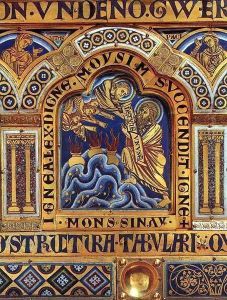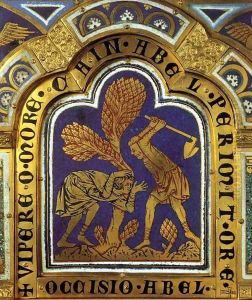Nicolas Of Verdun Paintings
Nicolas of Verdun was one of the most significant and influential European goldsmiths and enamel artists of the High Middle Ages. His exact date of birth is not known, but he is believed to have been born around 1130. He was active primarily in the latter part of the 12th century and the early years of the 13th century, with his death estimated to have occurred around 1205.
Nicolas of Verdun's work is associated with the Mosan region, which is now part of modern Belgium and France, and he is known to have been active in the area of Verdun. His style is characterized by its intricate craftsmanship and the incorporation of both Romanesque and early Gothic elements, reflecting the transition between these two dominant artistic periods.
One of Nicolas of Verdun's most famous works is the Shrine of the Three Kings in Cologne Cathedral, which he was commissioned to create around 1181. This large reliquary, meant to house the relics of the Biblical Magi, is considered a masterpiece of medieval metalwork and is adorned with numerous gilded silver panels and enamels depicting biblical scenes. The shrine is a key example of the opulence and technical sophistication that marked Nicolas' work and the period's sacred art.
Apart from his work on the Shrine of the Three Kings, Nicolas of Verdun created various other significant pieces, including altar frontals and other ecclesiastical treasures. His influence extended beyond his own creations, as he was also a teacher whose workshop helped to disseminate his techniques and stylistic traits throughout Europe.
Despite the fame and recognition he garnered during his lifetime, little is known about Nicolas of Verdun's personal life. Like many medieval craftsmen, his life is primarily documented through the works he left behind and the occasional mentions in commissions or historical records. Nonetheless, his contributions to the field of goldsmithing and enameling have secured his place as a prominent figure in the history of medieval art.


